As is my custom, I wanted to share a "sneak peek" into my next feature review for Positive Feedback "The Audio Note (UK) CD 2.1x/II Level Two Red Book CD Player: A CD Player that Reveals the Soul of the Music!"
My purpose for doing this is twofold, first it gives you a chance, dear readers, to get an early look, and secondly it gives an audio manufacturer a chance to do a fact check of the introductory part of the article, and let me know if I have screwed up anything, so I can address it before the final article appears.
I'm hoping to have the feature article finished up over the next week or so, so check back for more over the next few weeks.
Enjoy the sneak peek!
In my article about the Audio Note (UK) Oto Phono SE Signature Integrated Amplifier for Positive Feedback (Issue 108 HERE) I discussed how impressed I was with the Oto’s performance powering my vintage Duelund-Altec Project “Stokowski” loudspeakers (Issue 105 HERE).
The Oto and Altec-Duelund combination really wowed me with its superb musicality and sonic performance, and its ability to get the best out of the broad range of music I’ve been listening to.
Long time readers know of my fondness for integrated amplifiers, and the impressive performance they can deliver for the money spent, placing them solidly at the apogee of value in amplification.
Sure, separates can be awesome performance-wise, but it costs a lot more money to go that route, and from the practical standpoint of delivering musical satisfaction, it is hard to beat integrated amplifiers.
So, for the frugal, or for those just entering into the audio hobby, or for those entering into retirement and desiring to downsize, integrated amplifiers are hard to beat.
Integrated amplifiers sound great, generally cost less than separates, deliver a lot of performance for their cost (high value), take up less space, and are generally less expensive to maintain over the long haul.

At the end of the Audio Note (UK) Oto Phono SE Signature Integrated Amplifier article, I mentioned that the Audio Note (UK) CD 2.1x/II Level Two Red Book CD Player ($3874 USD) had just arrived, and that from my initial listening impressions it was a natural pairing with the Audio Note (UK) Oto Phono Signature integrated amplifier ($6330 USD).
While having a separate transport, digital-to-analog-converter, and the necessary connecting cables, is a popular route with digital aficionados seeking the ultimate in performance, for a digital source, the Audio Note (UK) CD 2.1x/II Level Two Red Book CD Player is the equivalent of an integrated amplifier, with everything incorporated into one chassis.
So, for all those same reasons that integrated amplifiers appeal to me so much – they sound great, generally cost less, deliver a lot of performance for their cost (high value), and take up less space – CD players like the CD 2.1/II also appeal to me.
Some people enjoy experimenting with lots of different components – wine tasting style – as they enjoy the experience of exploring audio components for its own sake, and that’s just fine, of course, if that’s what you enjoy.
However, some people want less over time. They want to simplify their lives. They want less complexity, fewer components, lower up-front costs, less maintenance considerations, and to just to be able to sit back and enjoy listening to the music with a minimum of fuss.
For those people, it is hard to beat the listening satisfaction that an integrated amplifier or CD player can deliver.
Even early in my listening, it was apparent to me that the Audio Note (UK) CD 2.1x/II Level Two Red Book CD player was natural sounding and musical, even with no run-in time, and now that it is fully run-in, I want to tell you the rest of the story about the CD 2.1x/II Level Two Red Book CD player, and I think there is quite the story to tell.
It has been ages since I had listened to a Red Book CD player as a “serious” source, as I have been mostly been listening to vinyl records over the last decade. Over the last decade I had all but written off Red Book CDs as a viable music medium, as I had just never been able to get Red Book CDs to sound reliably like music with the CD players I have owned or had access to in the past.
After spending time with the Audio Note (UK) CD 2.1x/II Level Two Red Book CD player, I came to realize that there is a lot more music lurking in those Red Book CDs than I had ever imagined possible, and that it was my CD players that came up short musically and sonically rather than the Red Book CDs themselves, which has been somewhat of a startling revelation for me.
My experience with the Audio Note (UK) CD 2.1x/II Level Two Red Book CD player has been a real ear-opener, both a music and mind expanding experience, and I have immensely enjoyed revisiting my large Red Book CD collection that I haven't listened to much over the last decade, as there’s lots of good music in it that I don’t have on vinyl (or was never available on vinyl to begin with).
I’ve even been buying new Red Book CDs to listen to just to hear them transformed into music by the CD 2.1x/II, something I didn’t think would ever be worthwhile for me to do again, and boy was I wrong about that one.
In this article I want to tell you all about the Audio Note (UK) CD 2.1x/II Level Two Red Book CD player, how it fares musically and sonically with Red Book CDs of all kinds of music from across the various recording eras, ancient to modern.
I also wanted to do a “vinyl test” of the CD 2.1x/II, by comparing its performance to my turntable playing vinyl records, where I have a few of the same albums on both vinyl and CD.
However, before we get into that, I want to take some time to tell you about the founder and driving force of Audio Note (UK), Peter Qvortrup, whose love of music and audio informs every single product offered by Audio Note (UK).
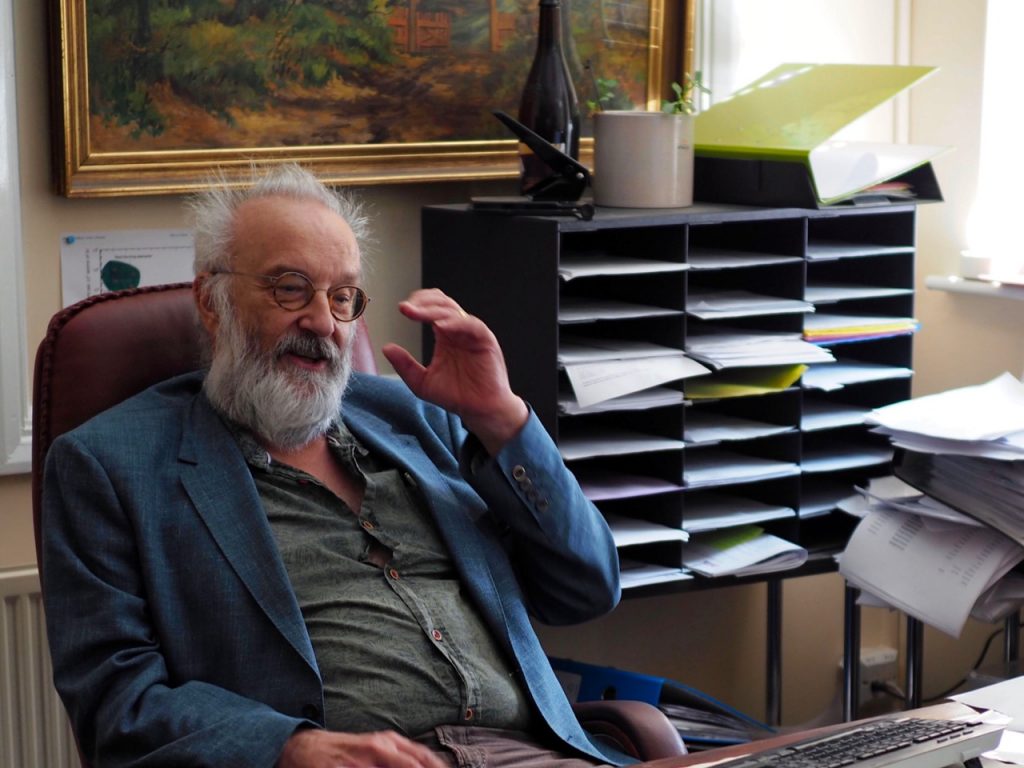
I truly enjoy telling you about the people of audio as much as I enjoy telling you about the products they offer.
Where did Peter come from? How did Peter get to where he is now? How does Peter see the world? What is Peter’s passion? How does all that influence the audio products Peter offers to music lovers and audio enthusiasts?
All of these aspects of a person’s life informs who they are and what they do, and in the case of the audio industry, these experiences form the fabric of a person’s life and manifests in meaningful ways in the products they offer, which are often a direct expression of their personality, passions, and philosophy about all things music and audio.
Peter’s lifelong passion for music, from the earliest acoustic recordings of the 1890s, to the recordings of new music today, informs every aspect of Peter’s audio offerings, so that you too can enjoy the soul of the music that you most love to listen to.
Peter Qvortrup of Audio Note (UK)
To use as a source for the details about Peter’s background story, Peter sent me a video link of an excellent discussion he had with Karthik Ramanathan, who produced the video “Master Class in Audio - Session 5 - Featuring Peter Qvortrup”.
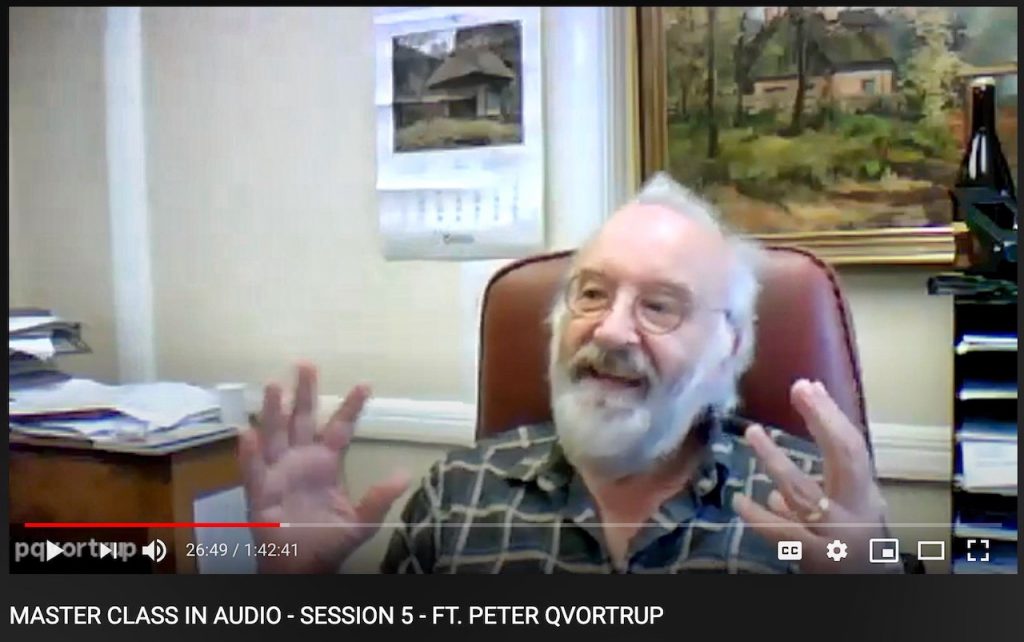
I recommend you watch the video if you haven’t yet, as I think you’ll find Peter’s discussion about music and audio illuminating on many levels, just as I did.
Peter goes into depth about how he got to where he is today with Audio Note (UK), and his thoughts about all things music and audio.
I transcribed what I thought were some of the most relevant, interesting, and entertaining parts of Peter’s discussion - with only slight editing – so that I could present to you Peter’s story in his own words.
It’s a bit of a lengthy read, but the content is exceptional, as it not only describes Peter’s history growing up in Denmark, his journey in music and audio, the path that led Peter to found Audio Note (UK), and Peter’s philosophy about realizing true musical satisfaction from high-performance audio.
For example, Peter discusses how audio equipment should be the servant of the music. Peter discusses how Audio Note (UK) designs every component part from the ground up – from source to loudspeakers, and everything in between – and how that system approach is essential to achieving an audio system that reliably delivers the music.
Peter also discusses the comparison by reference vs. the comparison by contrast methods for evaluating and developing audio equipment, and how important that distinction is in developing musical versatility along with high-fidelity in high-performance audio equipment.
Peter says he sees his job as making listeners understand the value of producing equipment that allows them to access all kinds of music in such a way as to realize the core musical message from whatever music they prefer to listen to, from the earliest acoustic recording era starting in the 1890s, to music recordings right up to the present day.
Growing up in Denmark
“From my part it starts with a keen interest in music. When I was growing up I listened to a lot of classical music in the 1950s, while I was young, probably more than is healthy.
“I have a great interest in the history, the history of music, the history of audio, and the history of all sorts of other things.
“As I grew up and started learning more about and understanding better who was famous, and why are they famous, and then you listen to artists that are not famous, and you think, well, why are they not famous, they are actually much better than the people that are famous. This doesn’t make any sense.
“You come to realize that people are not good at self-promotion, and are not good at choosing the right platform to shout their messages from.
“As mass media has become more and more commercial, and sort of dominant, and being able to influence people’s thinking without people being able / allowed to think about why they are being influenced is actually quite an interesting thing to watch and to consider.

“When my journey started and I went into audio, I originally had intended to become a medical doctor, but I failed the maths exam in Denmark, where you have to sit for quite a difficult maths exam to get into medical college. I diligently failed maths exam three times, which did my self-esteem no end of good, or maybe not.
“I then decided to take an apprenticeship at the world’s largest shipping company, called Maersk, and I spent six and a half years there finishing my apprenticeship, where I ended up sitting at the minerals and oil brokering desk. I decided it was the most boring thing ever and I thought I’d lose my wits if I stayed doing that, so I quit, and started my own company, because my main interest by then was really music.

My Journey into Audio
“I started dabbling a bit by importing hifi from various small manufacturers in the UK. I think it was 1974 and I had been to London, at the HiFi News Show at Heathrow. I met several small manufacturers there that were very nice, and had equipment that I thought sounded sort of reasonable.
“I opened a shop in 1979 that I still own, and that hifi shop is one of the three biggest specialty hifi shops in Scandinavia. I basically spent all my money when I opened the shop on buying equipment from all over the place and listening to it, to see if I could get a handle on what constituted “better”. That took a while and cost quite a lot of money.
“Then sometime in 1979 I helped a friend empty a system out of an old cinema, which landed me with some amplifiers and some very large speakers that I had difficulty in finding anywhere to store. It was a Western Electric / Westrex system that came from the Western Electric arm of Great Britain. When I finally got the amplifiers to work it came as a considerable shock to me that they were much, much better than what I was selling in my shop.
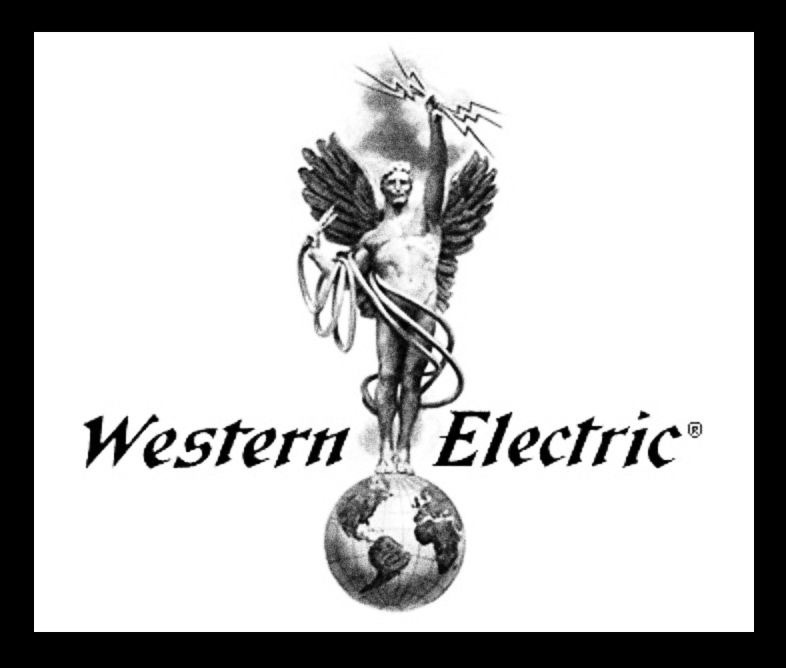
“When I went to the UK next, I decided to buy quite a lot of old equipment from the UK to see what that sounded like. I bought old Quads, old Leaks, and various other lesser known brands. Having restored them, I concluded that they were actually much better than what I was selling, which was kind of depressing, because what it demonstrated was that the idea that we were progressing in a real way in audio was actually wrong. We were regressing, and the audio industry was producing equipment that wasn’t as good as the equipment from the 1950s and 1960s, and earlier.
“So, I started on a historical journey for several years which resulted in me setting up a complete Western Electric 16A system in my apartment in Copenhagen, which was on the fifth floor. There was no lift, so carrying this gear up the stairs was quite a painful experience, apart from the fact that it took gouges out of the walls because these things were so big.
“Once I got that set up – it used field coil drivers – I came to realize that all the specialist hifi was really deficient in some very key areas. The Western Electric system was colored because it was designed for very large environments and to be listened to at a certain distance, and my living room wasn’t big enough for that.
“But I learned some important lessons from that. Over the years, up until about 1983, I listened to and purchased pretty much everything that was available that looked interesting,
like the Ohm F, or a set of Beveridge System II, or Heil Air Motion Transformer loudspeakers. Oscar Heil designed a full-range speaker with Heil drivers which was very interesting. It’s not particularly good by today’s standards, but it was damned interesting. Or the Alan Hill Plasmatronics.
“Anyway, I’ve sort of continued this historical journey, if you will, of looking at parts, at different design philosophies, different technologies, which is really how I’ve ended up where I sit now, impoverished and confused.
Audio Innovations in the UK
“How this developed, when I left Denmark in 1983, and I spent a few months in the US helping a friend who had a shop on Sunset Boulevard.

Sunset Blvd. public domain photo courtesy of Wikipedia.
“Then I went back to the UK and basically decided to start a company called Audio Innovations with the intention of reintroducing “affordable” valve amplification. Valve amplification is never cheap if it is any good, and we did that quite successfully.
“I sold parts of the company to partners to finance it because it was so successful. In the UK, and in the US, it is very difficult to borrow any money for an expanding company so you have to bring in investors. That’s really unhelpful, because the investors gang up on you and kick you out when they don’t like the way you run the company, which is exactly what happened.
“So, they took over the company and it went bust within three years because they had no idea what they were doing. You sort of feel aggrieved initially, then you think “It serves them right!” But then at the end of it you realize it was quite sad because it destroyed a perfectly viable company if it had been managed better. This was in 1990.
The Japanese Audio Note Company
“Starting in 1979, I had been working with the Japanese Audio Note company, and by 1990 that collaboration had developed into an almost worldwide collaboration. By then I was selling Audio Note worldwide, except in Japan, where it made more sense for Audio Note to sell it there.
“We did really well considering we were working during a period of quite severe economic hardship in the early 1990s. We did very well with these products, and we developed a homegrown product range in support of the Japanese products.
“We got to a point in the mid-nineties where I felt the Japanese needed to develop their products further. That met with quite a lot of hostility. At the same time, we were running into problems with the trademark and the brand name, because we were seeing people registering the brand name all over the world – Australia, Italy, Austria, the US, even in the UK.
“So, after some fairly heavy-duty arguments I persuaded Mr. Kondo that we needed to register the trademark. He signed the trademark over so we could register it, as he was not willing to pay for the registration. It is quite expensive to register a brand name and a trademark across the thirty to forty largest markets in the world. It is a hundred thousand dollars plus affair.
“We then get to 1997-1998 and the disagreements with the Japanese on which direction we should take technologically had started expanding quite rapidly. I wanted to take the company in a different direction than the way they were making their products. We presented them with a couple of prototypes, one of which became the M10 that was made in Japan, which has won awards all over the place, and justifiable so I think.
“Mr. Kondo got really quite offended by this. So, in 1997 there was the big financial crisis in Southeast Asia, which really put us on the back foot financially, because Southeast Asia was by far our biggest market. As it happens, it still is.
“Kondo-san decided he didn’t want to continue to work with us, and so we cancelled the agreement and went our separate ways. At the end of the day, from the business perspective, I think the argument was not well conducted by the Japanese.
The Origins of Audio Note (UK)
“We then ended up with a company in 1999-2000 which essentially got its own identity, if you will. All the products are produced in the UK. During the 1990s we added loudspeakers, a range of cables, turntables, and various other things to the product line. My belief has always been, that unless you control the entire system, you cannot predict what you are likely to get when you put a record on and the sound comes out of the speakers.
“By having a complete system, you are responsible for the end result. So, if the end result is bad, you only have yourself to blame. The mix and match approach that is so very popular in the high-end market, is as far as I am concerned complete nonsense.
“The analogy I always use is that you take a gearbox from a BMW, an engine from Mercedes, the front suspension from a Ferrari, the differential from a Lexus, and you try to put that together to get something that doesn’t kill you when you put it on the road. The likelihood is that it would kill you.
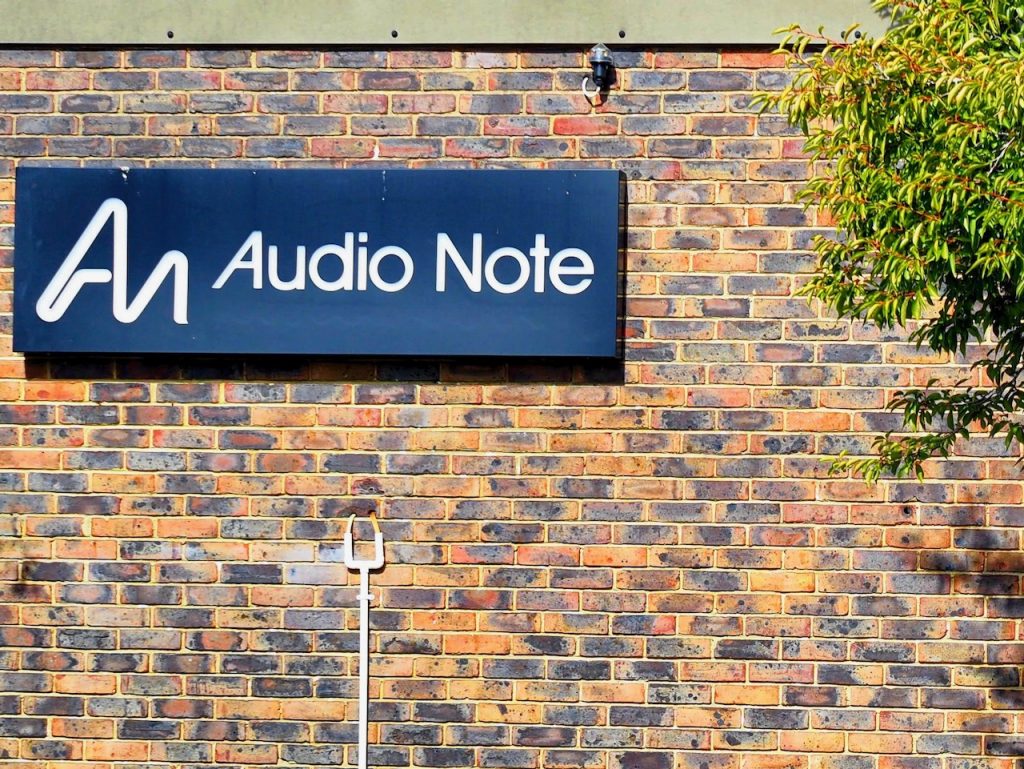
“That is really how the audio market works now, people will buy speakers from one manufacturer, amplifiers from another, cables from a third, a front end from a fourth, and they’ll try and get that to work, and the best I can say is that no system sounds better than the worst component. It’s like the traffic in Mumbai, the slowest traveler on the road determines how fast everyone else moves. We have a similar problem here in London.
“Over the years we’ve cast the net very wide and we’ve looked at technologies that go back to the 1920s and before. I’ve spent huge amounts of money and time experimenting with older equipment, older valves, with the parts, and what I’ve learned is that the industrial processes that were used over the last fifty years to make parts that are more consistent, parts that are smaller, parts that are cheaper, but these processes do not produce parts that are suitable for use in quality audio equipment. And since no one else makes parts that are any different, the only way to do it is to make them or have them made for yourself, which is exactly what I’ve done.

“It has taken many years and cost a vast amount of money, but I am pleased to say that we can see the light at the end of the tunnel. We are the only manufacturer in the world that makes everything from the ground up. We make the parts, we design the equipment, we do the metallurgy in the parts, we spend a great deal of money experimenting with processes to see if there is a difference in the sound of processes, then at the same time we get to listen to quite a lot of music – how can that not be good if your main interest is in music!
Audio Equipment is the Servant of the Music
“The driving force in what I’ve always done up until now, and that won’t stop, is that I really see the equipment as being the servant of the music. Equipment should really be invisible to the music, but it never will be, the best you can do is reduce its influence on any given recording as much as possible.
“What you cannot do is remove it completely from the equation, because then you are back to live music, and who the hell can get an orchestra in their front room. Not many people can do that.
“So, what we get is miniature versions of very large events, and when they are well recorded they will give you a believable and musically authentic representation of what was there. In many cases they don’t, but that doesn’t mean you don’t like the performance, you may not like the sound, but then again, the sound is really the packaging of the performance.
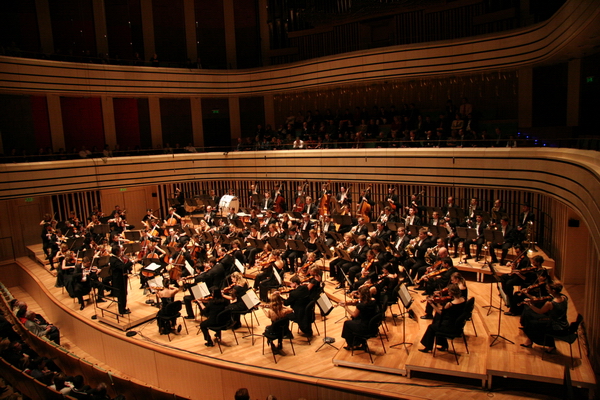
Public Domain photo of the Dohnanyi Orchestra courtesy of Wikipedia.
“Just like the idea the soundstaging, imaging, and so on, is somehow an important ingredient, and it is one of these things that is very difficult to get customers to understand – particularly with modern recordings – there really isn’t any of this on the recording, because the recording was done with each member of the band, or with an orchestra it is done with thirty-seven microphones, with one microphone over each section of the orchestra. Then it is all put together, so you have these fragmented bits that are all put together in the mixing and mastering process.
“The idea that this somehow is an important part of the performance, is that in my modest opinion is just nonsense. It is completely utter nonsense, and what it does, and particularly what it has done in the high-end industry, is that it disqualifies the entire musical heritage from pre-1955 before stereo.
“Certainly, in classical music, and to a large extent with jazz, the vast majority of the really valuable part of our musical heritage sits in the mono catalog, and in the 78 catalog. It seems absurd for an industry to favor ways of listening, and ways of evaluating quality, that nullifies some of the most important and interesting documents in the musical catalogue.
“… discussions that took place from when we went to the original Edison roll to the flat disc 78, or what happened between from when we went from the acoustic recordings to the electric recordings in the mid-1920s.
“Those discussions are very important to understanding what our view of music is and how it should be reproduced, and what is important in how music is viewed as a cultural artifact, if you can call it that.
“I think there is a problem with the vocabulary which we use to describe audio, it really misses the point. ‘Accuracy’ – what the hell does that mean? ‘Neutrality’ – what does that mean? I prefer words like ‘authenticity’.
Comparison by Reference Versus Comparison by Contrast
“I’ve developed the philosophical foundation of how I’ve evaluated – with a piece of equipment, or a resistor, or a capacitor, or an entire system – how well it does its job.
“Basically, the idea there is quite simple, that we do not know what is on the recording, because at the end of the day we don’t know what was picked up by the microphones. We know what the piece of music is, we know who the artists are, but we cannot with any certainty say that the microphones or the rest of the equipment in the recording process did the job we expected them to do. Therefore, from that it follows that the only thing we do know about recordings is that they must have a different sonic signature, that has little to do with the music, it has to do with the way the recording sounds.
“So instead of using an evaluation system which by and large you can call comparison by reference - comparison by reference is where you sit down with a number of known recordings, and you then play those on an amplifier, pair of speakers, etc. - but the mere fact that you use these records as a reference means that you assume that you know what is on those records, but you can’t possibly know that. There are a lot of things you can know, the music, the artists, and so on, you can know one recording is better than a lot of other recordings in the presentation, but what you cannot know is precisely how the recording sounds.
“This is where comparison by contrast comes in. If you take, which is how we tend to develop these products we make, all the parts that we make and design, by listening to 5 or 10 random records, then we listen to them to see if a given piece of equipment, circuit, or component, is whether that makes the recording sound more different, more individual, from the other equipment, circuits, etc., that we are developing.
A Music Lovers Versus Audiophile Style of Presentation
“That’s easy to do, but you have to unload so much of this audiophile nonsense that is so dominant, most of which comes out of the US. You have to get rid of this idea that “Oh I know what the violin sounds like on this record,” or “I know what the piano sounds like on this record.” Or “I listen more in the sound field where the instruments are,” in spite of the fact that you don’t really know where they are. The mere fact that you use more microphones actually creates a problem in the timing of how the instruments sound together.
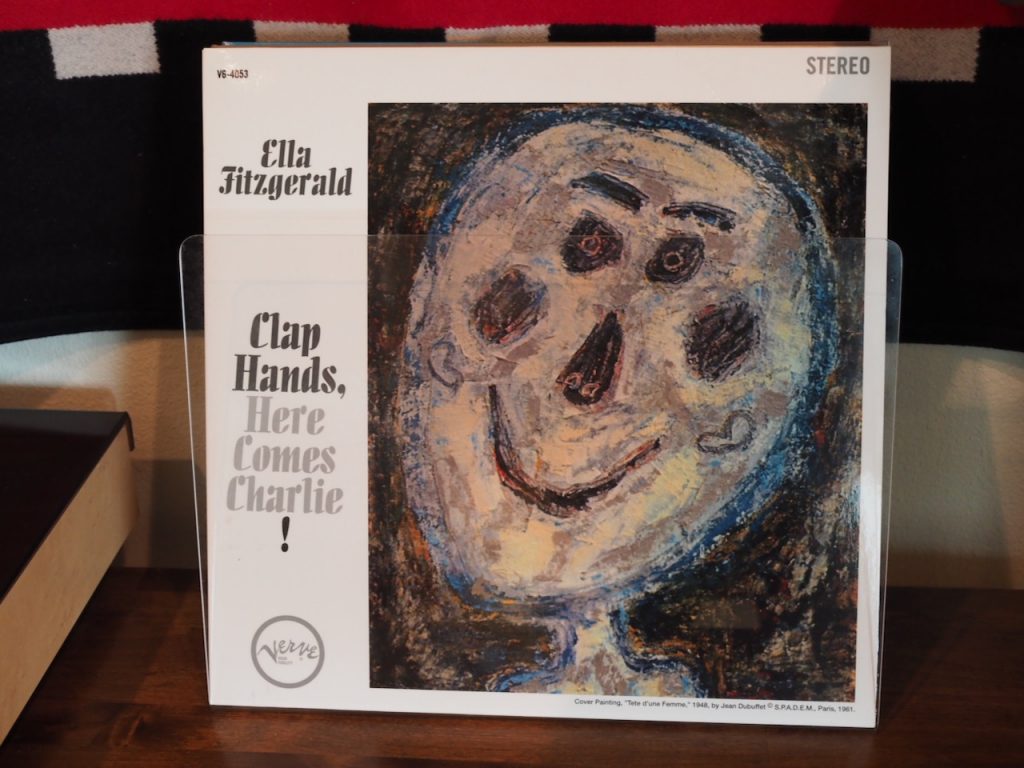
“There’s a very famous test - I think Dick Olsher did this originally, but I’m not quite sure - where they took the latest re-release of Ella Fitzgerald’s Clap Hands Here Comes Charlie, and they compared the Analogue Productions with the original stereo version, and then they compared it to the original mono. I have all three, so I can do exactly the same comparison.
“It is very interesting when you listen to the timing, it is quite a small band, and with the mono all of the sounds from the different instruments arrive around the same time. When you have several microphones on the stereo version you get a very subtle change in the timing in the way the instruments play together, and you can hear that. You have to listen closely, but you can hear that.
“That begs the question of “Why did we get stereo in the first place?” Because they knew this. I had early discussions from the technical department of EMI, where there were lots of discussions about this, and this was one of the points that the recording engineers made at the time. So, what they were saying was we need to stick with mono, but use two speakers, two amplifiers, but then play mono.
“I’ve done tests at shows over many, many, years, where I would play the mono version. I would have the stereo jacket for the record, but I had the mono version in it, and I would play the mono version. I would put the stereo jacket up so people could see what’s playing. I have never had a single complaint that it didn’t sound like stereo.
“If you study the comparison by contrast method in more detail, one of the things you’ll realize if you hear a system that is good at presenting the contrasts, it becomes pretty obvious what you should be listening for.
“I’ve tested this on many people over the years, and what is very interesting is that most of the people that respond well to this, do not carry too much audiophile baggage. They are listening for parameters that they know.
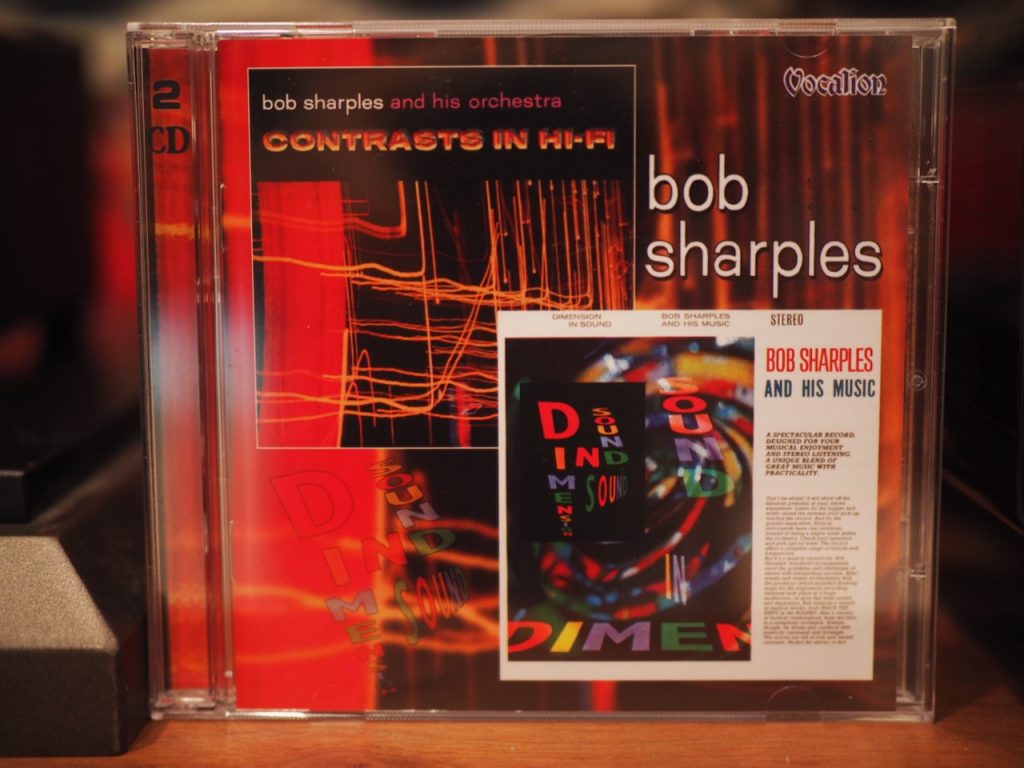
“They have this expectation of imaging or soundstaging or whatever it is … I have a record, Bob Sharples’ Dimensions in Sound, and is one of the more interesting records to own. What is interesting about this record is that it is clearly described in the text on the back, where in the sound-field the instruments are, how far back they are. This allows you a more effective way – all things being equal – of judging what your system is actually doing.
“It’s quite easy to make, for example, a loudspeaker that presents imaging in a certain way on a multi-mic’d recording. All you have to do is have a slight raise in the energy band from somewhere between 2kHz and 5kHz, which is where a lot of this information sits, and the result is you get better imaging and soundstaging.
“But at the end of the day all of this is packaging of the sound, it is not the sound itself. That’s where I think the industry has completely and utterly lost its way. It is incapable of prioritizing what it is that matters.
“When you speak to musicians – I have a number of quite well-known musicians on my client list – several of whom have become friends over the years. When you sit and talk to them they start out saying, yes, all of this matters.
“But then you play them systems, and you start playing them old recordings from 78s, particularly recordings from the acoustic era. Now what’s special about those recordings is that the distance between the man singing into the horn, and the membrane with the pin that copies the sound into the lacquer, is very, very, short. So, the distance between the actual event and putting it down to document is very, very, short. Yes, there are issues with distortion and all kinds of other things, but there is an authenticity to recordings that are done this way.
“When you listen to people like Caruso, Martinelli, or any of the other great singers from that period, they were all recorded this way. They were not recorded using any kind of electronics. It was purely mechanical and acoustic.
“There is something about those recordings, they capture something that nothing we’ve done since captures. That begs the question, “What is that we are missing?”
“Why are we not, with all of our fancy technology, why are we not capturing this? Why are we not able to capture that? It is in the sort of phrasing, and the sort of emotional content, if you will, from these recordings. We don’t pick that up with modern equipment.
“I’ve spent a lot of time in the studio, because I act as an acoustic advisor to a very famous conductor, a friend of mine. So, I’ve spent many hours at the recording venues listening to the downplay, back-play from the recordings, listening to the individual microphones, and all sorts of things like that, and the conclusion I’ve come to is we’re really not doing a very good job of it. This is in spite of the fact that his readings of the particular pieces of music we are recording are quite phenomenal by any standard, historical or otherwise. It is just that the document we are creating does not reflect that.
“The question of subjectivity is what kind of music you prefer, not what the sound should be. If there’s music I really like, but the recording is bad, I still listen to it. I listen to music that goes back to the 1890s. I can tell you one thing, it is not a great sound, but the performance is really worth listening to. Being able to listen to Edvard Greig play his own Papillon in 1903 shortly before he died, that is a form of time travel, the only form of time travel that any of us will ever do. Same as with Chaliapin singing The River Maiden, or whatever, that is what is so special about these old recordings, that we can delve back into and listen to people that have gone on many, many, years ago. These things have a value that goes far beyond this audiophile bullshit, to be perfectly frank with you.
“I see my job as to make my audience understand the value of this by producing equipment that allows them to access it in such a way as they get the core musical message rather than just the noise from the 78. Audiophile equipment will just give you the noise, which is why many people don’t listen to recordings like this.
“If you listen to really early stereo recording, like Sonny Rollins Way Out West, on the original stereo version of that you have the saxophone on the left, and the drums and bass on the right – that is “stereo”.
“The Electric Recording Company released what probably the finest re-releases of Way Out West, and they purposely released both the original tapes on stereo, and they re-released them in mono. These were done by different microphones simultaneously. The stereo is somewhat irritating to listen to because of the way it is recorded, and the mono is much preferable.
“I think again that history is important here. It is important to understand history. I study economic history as well. We are good at forgetting things that don’t fit our particular set of biases, for example. That’s very common, and I would say it is more common than not, but that doesn’t mean we can’t learn from history, and in fact we would probably be better off studying a bit more history and a bit less technology. To understand why things ended up the way they did. Once they started being able to record with multiple microphones, as we went through the 1960s, you can hear a very gradual degradation of the quality of the source material.
“This is one of my main interests in life, and I also happen to make it my living, so it mixes itself very nicely there.”
The Audio Note (UK) CD 2.1x/II Level Two Red Book CD Player ($3874 USD)
Peter, and Audio Note (UK), take Red Book CD players very seriously as a music source, believing they are still the best home digital source for many people.
The CD 2.1x/II Level Two Red Book CD Player (HERE) is the third up a ladder of the five Red Book CD players offered by Audio Note (UK).
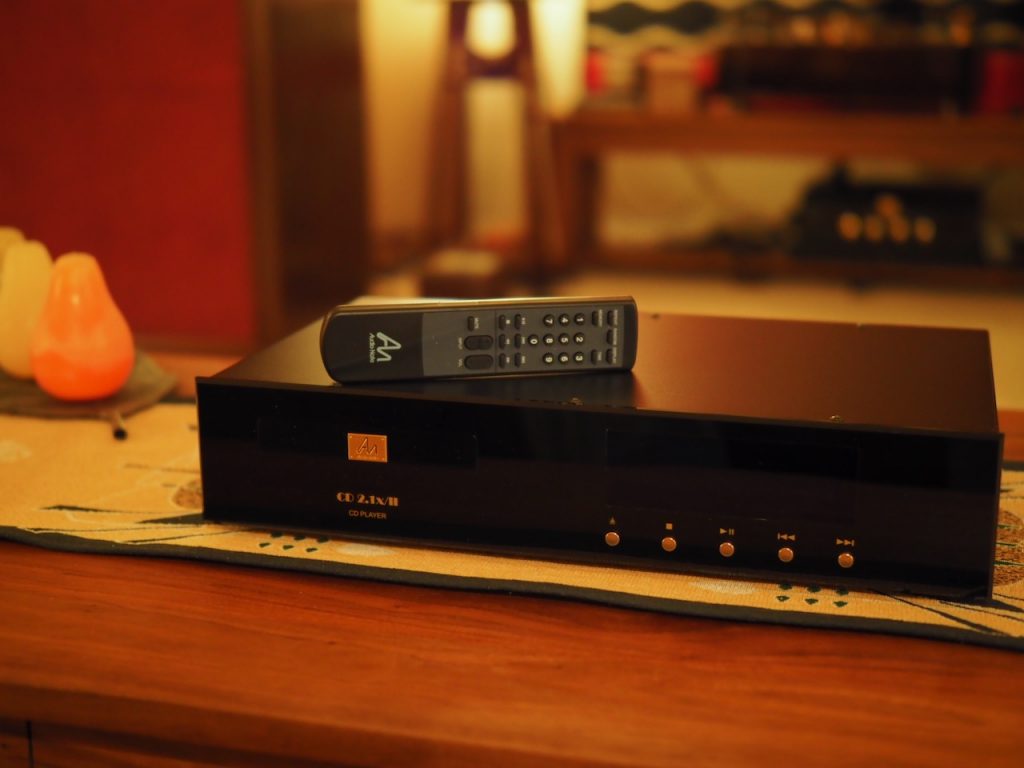
The CD 2.1x/II Red Book CD player “fulfills all Audio Note (UK) Level 2 criteria”, and is an upgraded version of their CD 1.1x Level One Red Book CD player with better parts, like Audio Note (UK) tantalum resistors, Cerafine capacitors, and Audio Note (UK) copper foil capacitors, that are intended to give the CD 2.1x/II “a more open, detailed, and lively performance in comparison with its more affordable stable mate.”

To quote the Audio Note (UK) website, “The CD 2.1x/II uses an in-house modified Philips L1210 dedicated Red Book CD mechanism and a simple yet revealing DAC based around the Philips 1543 16-bit multi-bit digital to analogue converter chip. The analogue output stage is equipped with the quite exceptional 6111WA miniature triode and our own in house designed and manufactured Audio Note (UK) copper foil capacitors. This player, like its bigger brothers, features no oversampling and no digital filtering, making for a highly effective sonic combination all housed in a small and robust chassis.”
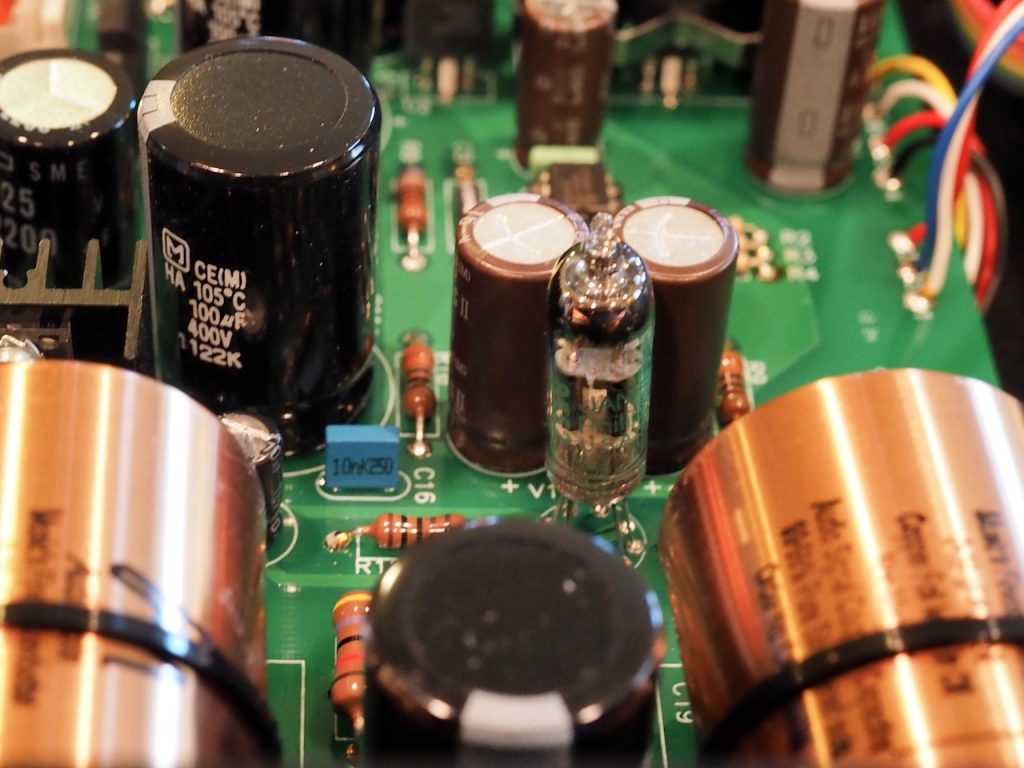
I asked Peter if he would share a few words with us about the CD 2.1x/II.
Peter told me that the CD 2.1x/II benefits from “trickledown” from “the principles, topology and technology from our more expensive products, and distils them into a less expensive product by keeping the fundamentals intact whilst taking out as much cost as possible.”
“I know this may sound like an oxymoron, but by carefully listening to the prototypes as they develop it is possible to retain the core qualities and still shed a great deal of cost, critical listening and good judgement is of course key to this endeavor, plus the fact that we have control of the sound of most of the parts used in the circuit.
“We use the TDA1543, as at the time we designed the lower end CD player/DAC range they were the best sounding chip available, so we invested in 10,000 pieces, as immediately it became obvious that they did a good job.”
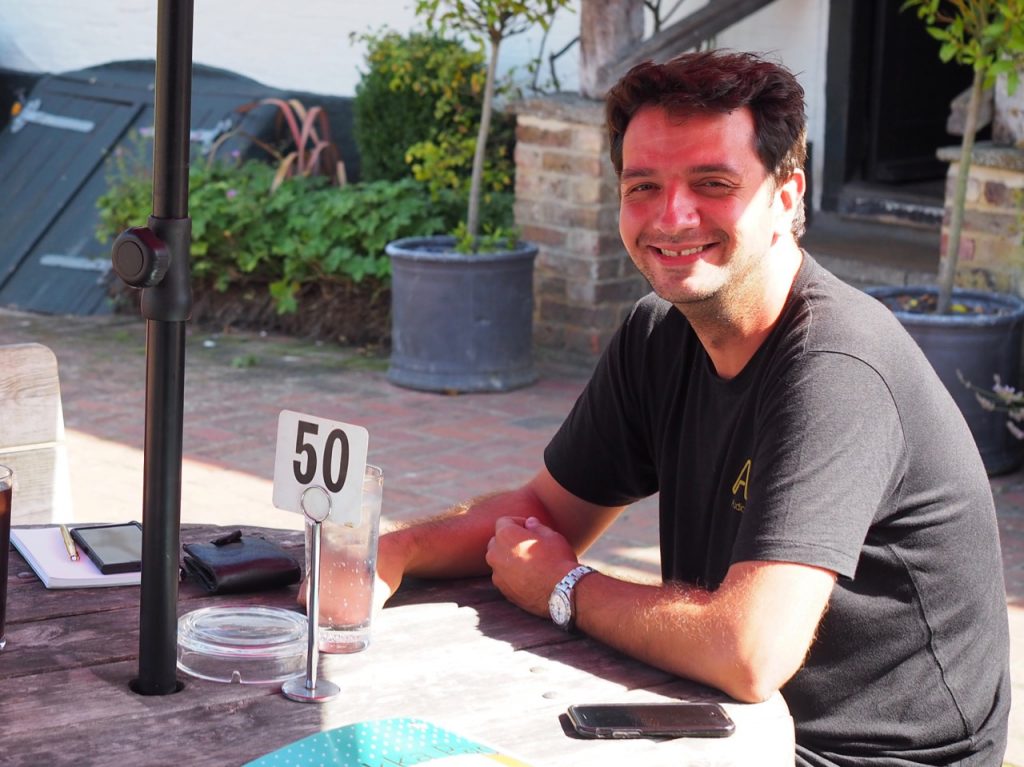
Darko Greguras of Audio Note UK
If you haven’t read the posts yet on Jeff’s Place, Darko Greguras went into detail about how Audio Note (UK) is doing research and development to advance the potential of digital media, and I encourage you to read them for additional information (Part 1 HERE, and Part 2 HERE).

Here’s what Darko told me about the CD 2.1x/II Level Two Red Book CD player:
“The CD 2.1x/II is so well rounded and musical, it is always exciting to discuss our junior products!
“What is so magical about it?
“The CD 2.1x/II is a very good example of how important careful voicing and having a deep understanding of what is going on ‘under the hood’ is.
“It has a big heart and uses minimal processing, no oversampling and no digital or analogue filtering, combined with a carefully controlled degree of rising edge control, just enough to connect or blend the dots - or samples - into a real music.
“By carefully modelling and controlling both sides of the spectrum to work harmoniously, we have managed to achieve a very articulate voice; that is the fundamental aspect, and why music flows so well with the CD 2.1x/II.
“The CD 2.1x/II was engineered around an economical version of Philips DAC IC, the TDA1543, and the Philips L1210 CD mechanism. The shortest possible route between these fundamental parts always impresses, and elegantly shows how beauty lies in simplicity.
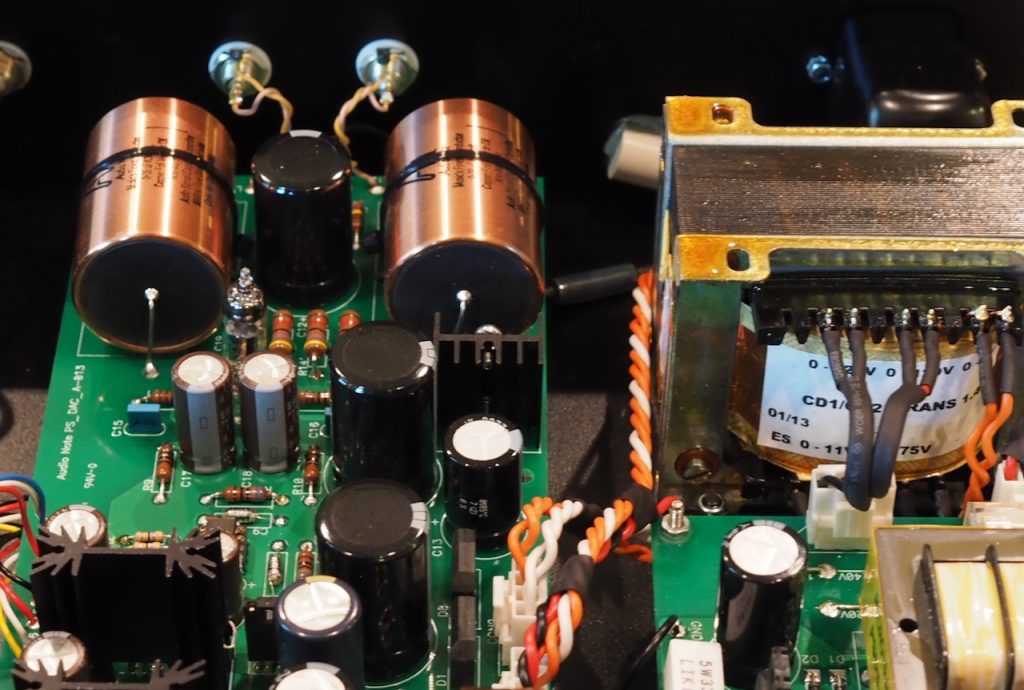
“The output stage was designed around the very musical 6111WA miniature double triode, and an improved selection of our usual custom components are used to raise the CD2.1x/II’s specification; Audio Note (UK) 0.5W and 1W tantalum resistors, Audio Note (UK) standard electrolytic capacitors, and Audio Note (UK) copper foil coupling capacitors.”
Let’s do a “walk-around” of the CD 2.1x/II Red Book CD player.
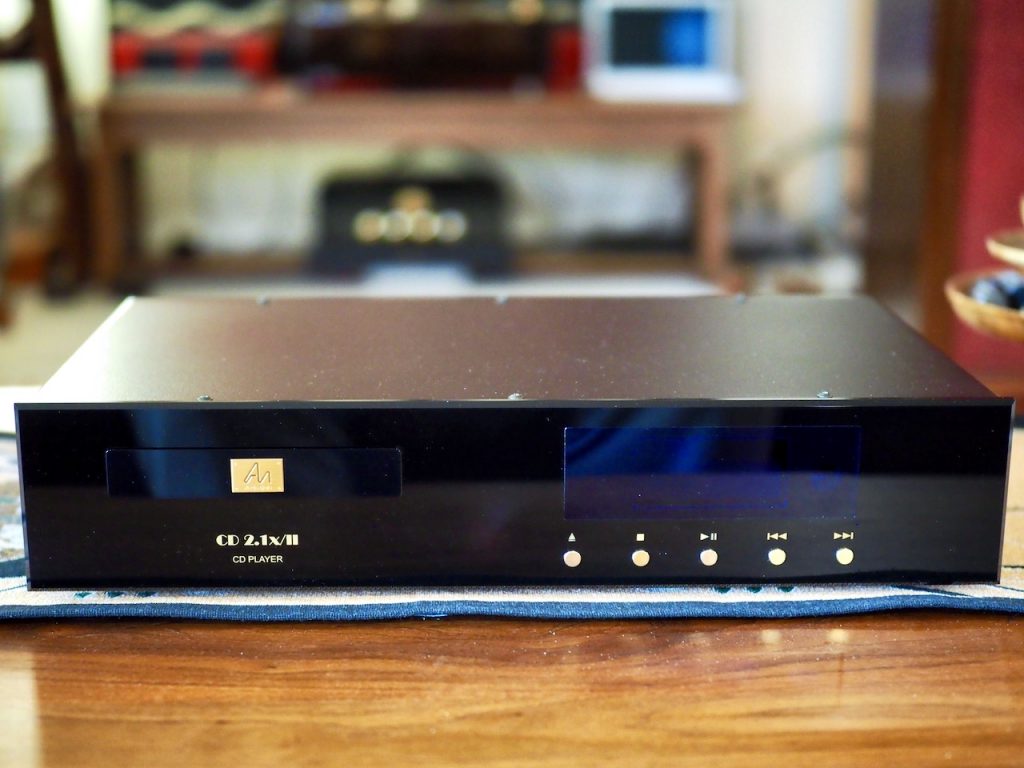
Starting at the left front of the chassis, you can see the tray for loading the CD, which is opened or closed by the left most button under the display. Proceeding to the right of the open/close button is the “stop” button, the play/pause button, the button for skipping back a track, and finally the button for skipping forward a track.

Now let’s take a look at the rear of the chassis. Located on the far left is the mains switch for powering on and off the CD 2.1x/II. Beneath the mains switch is the fuse, and below the fuse is the IEC inlet socket to plug the power cord into.
To the right of the mains switch is the right and left analogue outputs for connecting to a preamplifier, or in the case of this article, the CD inputs for the Oto Phono SE Signature integrated amplifier.
To the right of the analogue outputs is a coax digital output should you decide you want to add one of Audio Note (UK)’s outboard digital-to-analog converters at a later date.
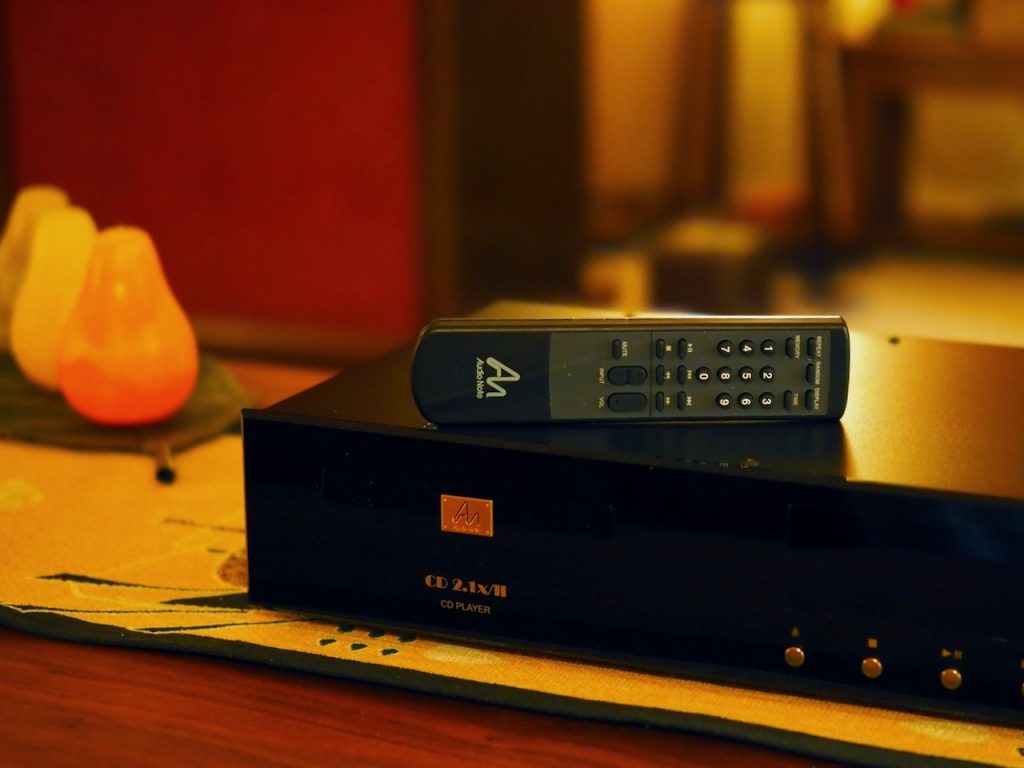
The remote is very handy to use from the listening position, and offers a multitude of features, for which I’ll refer you to the owner’s manual for more detailed information (HERE).
Review System
The equipment in my system for this article is – from speakers to source – the Duelund-Altec Project “Stokowski” Altec loudspeakers (HERE), Duelund DCA16GA tinned-copper speaker cables (HERE), the Audio Note (UK) Oto Phono SE Signature EL84 parallel single-ended-pentode integrated amplifier (HERE), with Duelund Dual DCA16GA tinned-copper interconnects, terminated with plastic-free Duelund RCA connectors, connecting it to the Audio Note (UK) CD 2.1x/II Level Two Red Book CD player.
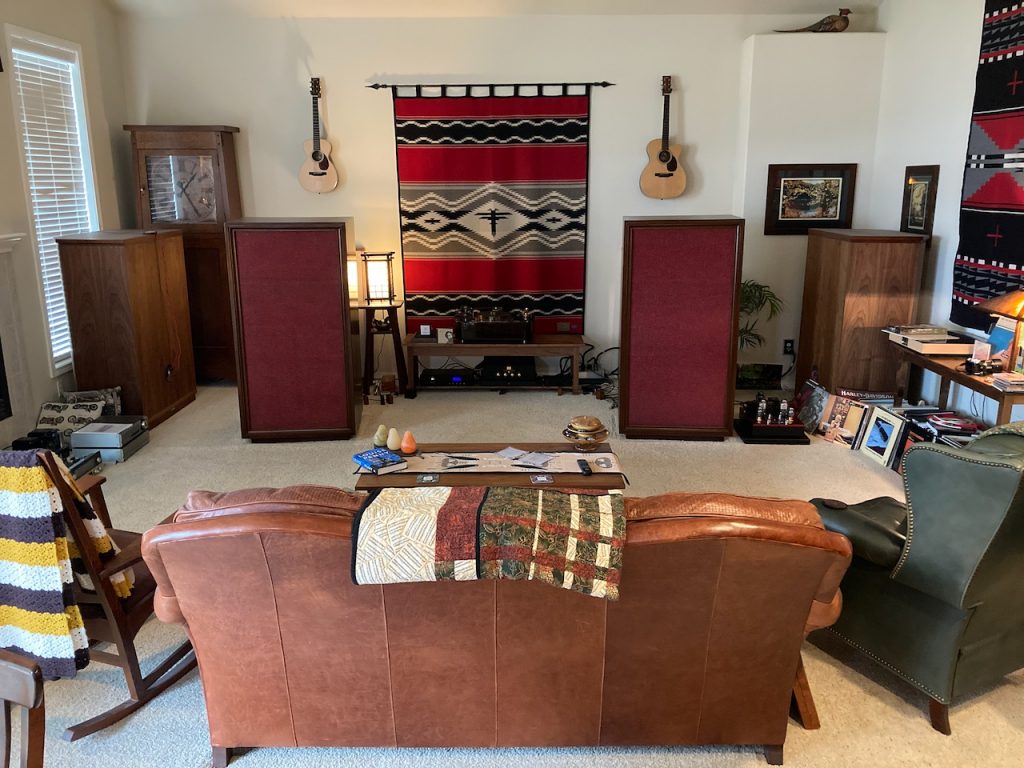
My Classic Turntable Company hot-rodded Garrard 301 served as the vinyl front end for CD to vinyl comparisons. My CTC 301 utilizes a Thomas Schick tonearm fitted with a Yamamoto blackwood headshell and Soundsmith Zephyr Mk III high-output phonograph cartridge (HERE). The tonearm leads from the Schick tonearm go directly into the Oto’s phone stage.
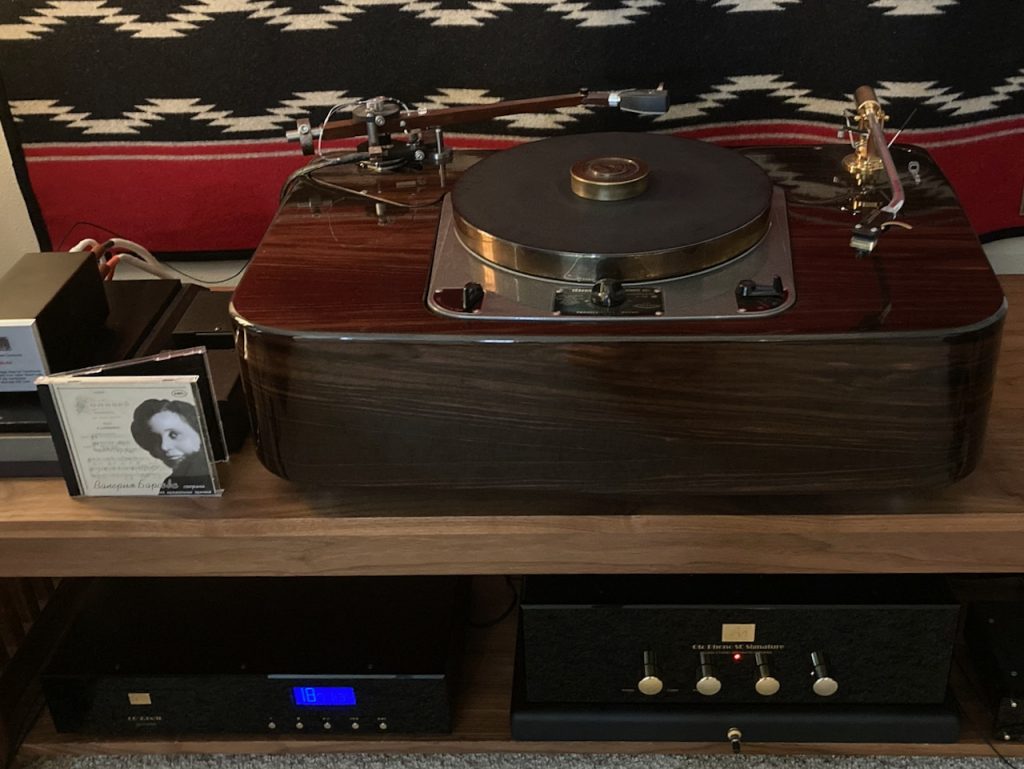
My CTC 301 also utilizes a second tonearm, the Pete Riggle Audio Engineering Woody tonearm, mounted with an Ortofon SPU Classic G MkII moving coil cartridge with an 18 µm spherical stylus profile. The tonearm leads go directly into an Audio Note (UK) AN-S4 step-up transformer (review to come), and the AN-S4 is connected via shielded Duelund DCA16GA tinned-copper interconnects to the Oto’s phono stage.
A Few Thoughts About Peter’s Audio Philosophy and Listening to Music
You might want consider this section as a preamble to my listening impressions, as Peter has raised some important and illuminating points to reflect on, enough so that I have altered my usual process of evaluating hifi equipment to incorporate Peter’s ideas:
Audio Equipment is the Servant of the Music
Peter makes a strong case for audio equipment being the servant of the music, by being invisible to the music to the greatest extent possible, and by providing a “believable and musically authentic representation” of the music on a recording, regardless of a particular recording’s sound quality.
Peter also addresses the relative importance of the audiophile-style emphasis on visuospatial recording artifacts like soundstaging, imaging, etc., and dismisses that emphasis as not being an important part of a musical performance.
Peter’s raison d'être is that audio equipment that overly emphasizes visuospatial traits can significantly diminish the ability to play music from our entire recorded music canon in an enjoyable fashion, severely limiting what music we can listen to and enjoy.
Peter sees this topic as a key to being able to listen to all kinds of music from any period in the history of our recorded music canon in an enjoyable high-fidelity fashion, and in developing audio equipment that allows that.
Comparison by Reference versus Comparison by Contrast
Peter discussed two audio equipment designing and voicing paradigms – comparison by reference versus comparison by contrast – that deals with how audio performance developed with those paradigms can affect what music you can listen to and enjoy.
According to Peter, the “comparison by reference” method of designing & voicing audio equipment is based upon designing & voicing audio equipment so that its performance is maximized for exceptional recordings from the magnetic recording era and beyond, while essentially ignoring the audio performance that is necessary to allow listening to some of the most important musical performances ever recorded coming from the acoustic and electrical recording eras.
Peter uses an alternate method of designing & voicing audio equipment that he refers to as “comparison by contrast”. With the comparison by contrast method of developing & voicing a large number of random recordings are selected from all the recording eras, and the design and voicing process optimizes the equipment’s ability to play all kinds of music in high-fidelity, rather than limiting it to just exceptional recordings from the magnetic recording era and beyond.
A Music Lovers versus Audiophile Style of Presentation
Longtime readers will recognize that Peter’s philosophy on audio equipment design & voicing plays directly into my personal biases about high-fidelity audio equipment and listening to music, which I have been referring to as a “music lovers versus audiophile-style” presentation of the music for the last decade or so.
However, Peter’s depth of knowledge and insight into this topic, about how each design emphasis is achieved, and the implications this holds for listening to a broad spectrum of music, is vastly greater than my own.
Peter’s discussions of this topic have been very illuminating for me, and have allowed me to get a much greater understanding and appreciation for how meaningful this distinction is in my day-to-day enjoyment of music.
The first question that you and I might pose might be, “Is this distinction in the approach to designing & voicing audio equipment real and meaningful, and if so, how does it affect my day-to-day music listening?”
My observation upon listening to music with Peter with his audio system, and listening to his entry level Audio Note (UK) equipment in my own home, is that yes, there is a real and crucially important distinction between the “comparison by reference” and “comparison by contrast” design & voicing methods that dramatically effects what music I can listen to and enjoy.
Reflecting back on the audio equipment I have owned that was developed with a comparison by reference method, I found I quickly became frustrated and irritated with it because it so limited what I could listen to in an enjoyable fashion.
However, audio equipment developed with a comparison by contrast method allows me to listening to anything I want and experience it in an enjoyable and high-fidelity fashion.
That’s distinction is a major breakthrough for me, and one that I want continue to explore.
For example, when I visited audio shows in the past, or even when I visited passionate enthusiasts of high-performance audio, they often tended to play only the exceptional recordings from our recorded music canon, as they desired to impress me and other listeners with the sound quality of their audio system.
However, when I was visiting Peter Qvortrup last year, he played 78 transfers to CD for me from the acoustic and electric recording eras, and they were wonderfully musical listening experiences.
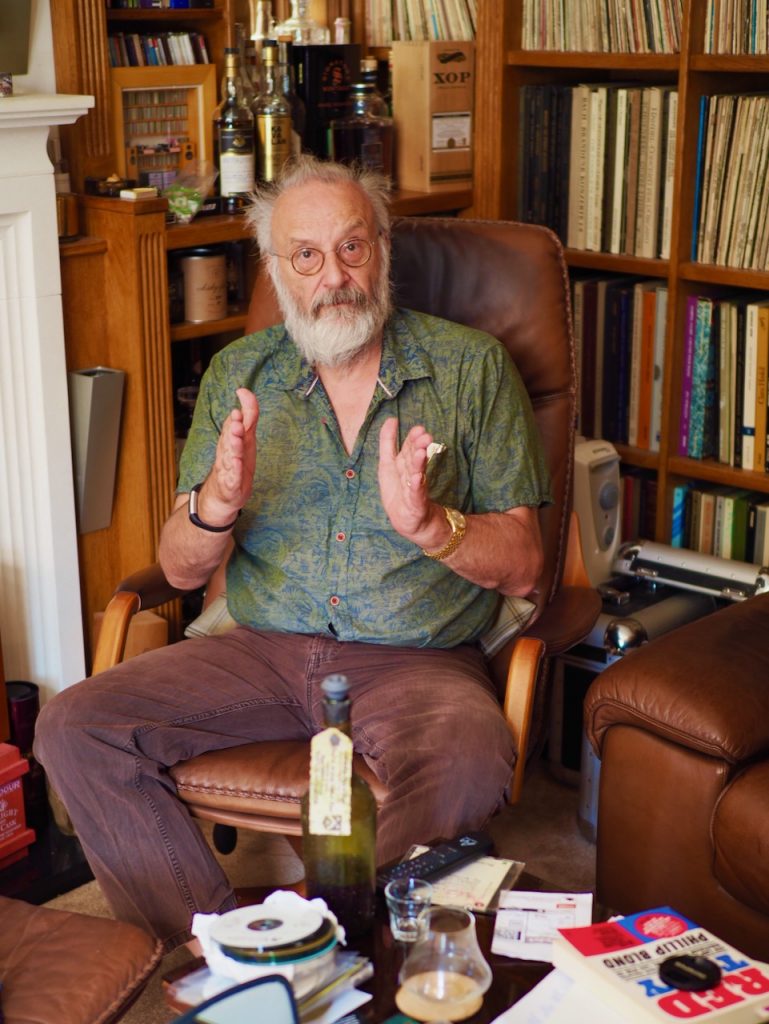
Peter Qvortrup (Audio Note (UK)) in his home listening room.
Peter also played a number of LPs for me, mono and stereo, with the common thread that ran through our listening session being how enjoyable and engaging that wide variety of music was through his audio system.
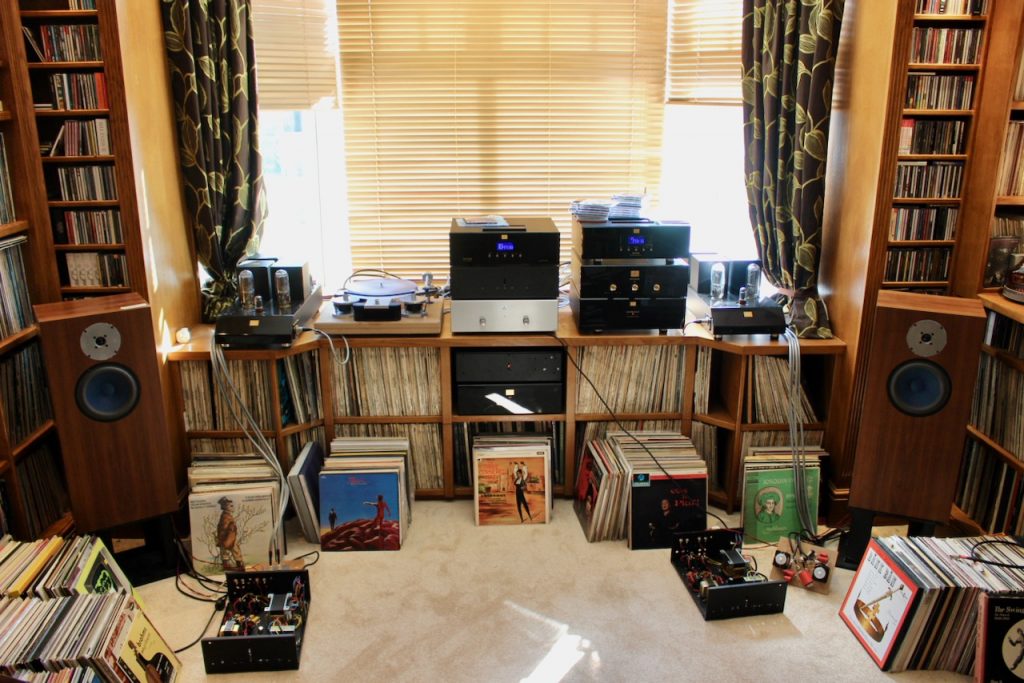
Peter's prototype Audio Note (UK) field-coil loudspeakers.
Listening to music with Peter was a fundamentally different experience than listening to music at audio shows, for example, and I really enjoyed it.
Meeting Peter, listening to music with him, hearing him discuss what he believes is most important in audio, and now listening to his Audio Note (UK) equipment in my own home, have become watershed moments for me in terms of understanding how these two genres of audio equipment voicing play out in everyday listening.
Consider this: Our entire recorded musical canon spans the acoustic horn recording era (1877-1925), the electrical recording era (1925-1945), the magnetic recording era (1945-1977), and the contemporary digital recording era (mid-1970s to today).
Humanity's entire recorded music canon is of enormous historic importance to the musical arts, so much so, that in the USA, the Library of Congress' National Audio-Visual Conservation Center has archived our recorded music history so that the generations that come will be able to enjoy our recorded music heritage, and I imagine that other countries have done the same thing, to a greater or lesser extent.

National Audio-Visual Conservation Center in the USA.
Think about how rich our recorded music canon is from all those eras, and most of what was recorded in a prior era was never re-released in subsequent eras.
Recordings popular among audiophiles probably make up less than one percent of the music recorded since the beginning of the recording arts, so if that's all you listen to, you are missing most of our important recorded musical legacy, and are depriving yourself of some truly great music that will expand your listening horizons.
It can be immensely gratifying to become more familiar with the various eras of our musical history and legacy, as a well-rounded person who appreciates music, and having an audio system that is designed to allow for listening to a broad range of recordings from our history allows for that.
That is where this difference in these two approaches of designing and voicing audio equipment that Peter described earlier – comparison by reference versus comparison by contrast – matters in everyday listening.
In recent articles I have described this ability of audio equipment to play a broad range of recordings in a musically satisfying way as having a “wide listening window”, and audio equipment that limits the listener to a comparatively few exceptional recordings as having a “narrow listening window”.
For people who enjoy fine audio, but are music lovers at heart and want to listen to a lot of varied music, a narrow listening window results in continually altering their audio systems in hopes of being able to enjoy a broader cross-section of music, and often coming up short. So, they buy some new audio equipment, but that comes up short too, and the cycle repeats itself.
I now believe that situation is largely a manifestation of the comparison by reference approach to designing and voicing audio equipment, and if you want to be happy and content with your audio system for the long term, you are better off with equipment designed and voiced using a comparison by contrast approach.
Now when I write about audio equipment, I am going to incorporate more of an emphasis on a comparison by contrast approach, that is I will incorporate a much broader range of recordings from different eras, of varying recording quality, to evaluate overall performance.
Incidentally, my Duelund-Alec Project “Stokowski” loudspeakers do the wide listening window performance attribute impressively well, as does the Audio Note (UK) Oto Phono SE Signature integrated amplifier, making music from the different recording eras a truly enjoyable and remarkable musical feast.
The second question you and I might pose is, “Does voicing equipment with a comparison by contrast approach mean that that style of audio equipment is limited in performance on the best recordings, and in presenting visuospatial performance, that so many audiophiles value?
My observation is that – if anything – the best recordings sound even better, more natural and engaging musically, and provide even more natural and “real” sounding visuospatial information from recordings.
In other words, the comparison by contrast approach to designing and voicing equipment is a win-win situation across the board for both music lovers and audiophiles.
Listening Impressions
Ok, that's it for now. The final article should be published at Positive Feedback in the next couple of weeks.
As always, thanks for stopping by, and may the tone be with you!



























